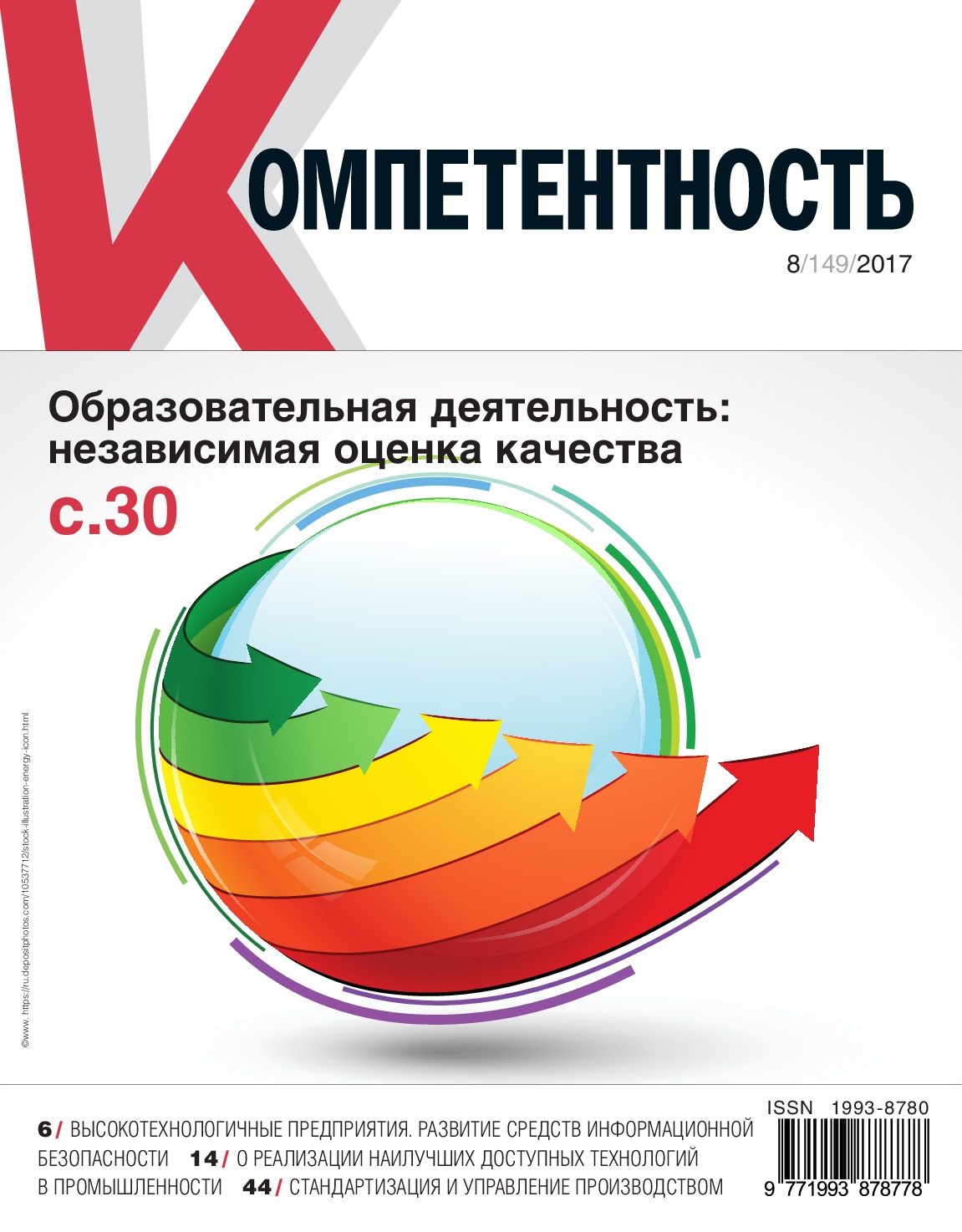Journal Kompetentnost': 8 / 149 / 2017
Articles
-
1
Improving the Competitive Sustainability of High-Tech Enterprises Based on the Development of Information Safety
Authors: Prof. Dr. V.Yu. Korchak, Chairman, Applied Problems Section of Russian Academy of Sciences, Full Member of Russian Academy of Rocket and Artillery Sciences, Moscow, Russia, korchak.v@mail.ruDr. N.S. Efimovа, Associate Professor, Moscow Aviation Institute, Moscow, Russia, efimova_ns@mail.ruDr. V.V. Kalachanov, Associate Professor, Moscow Aviation Institute, Moscow, Russia, vkalachanov@mail.ruD.А. Davydov, Postgraduate, Moscow Aviation Institute, Moscow, Russia, kaf506@mail.ru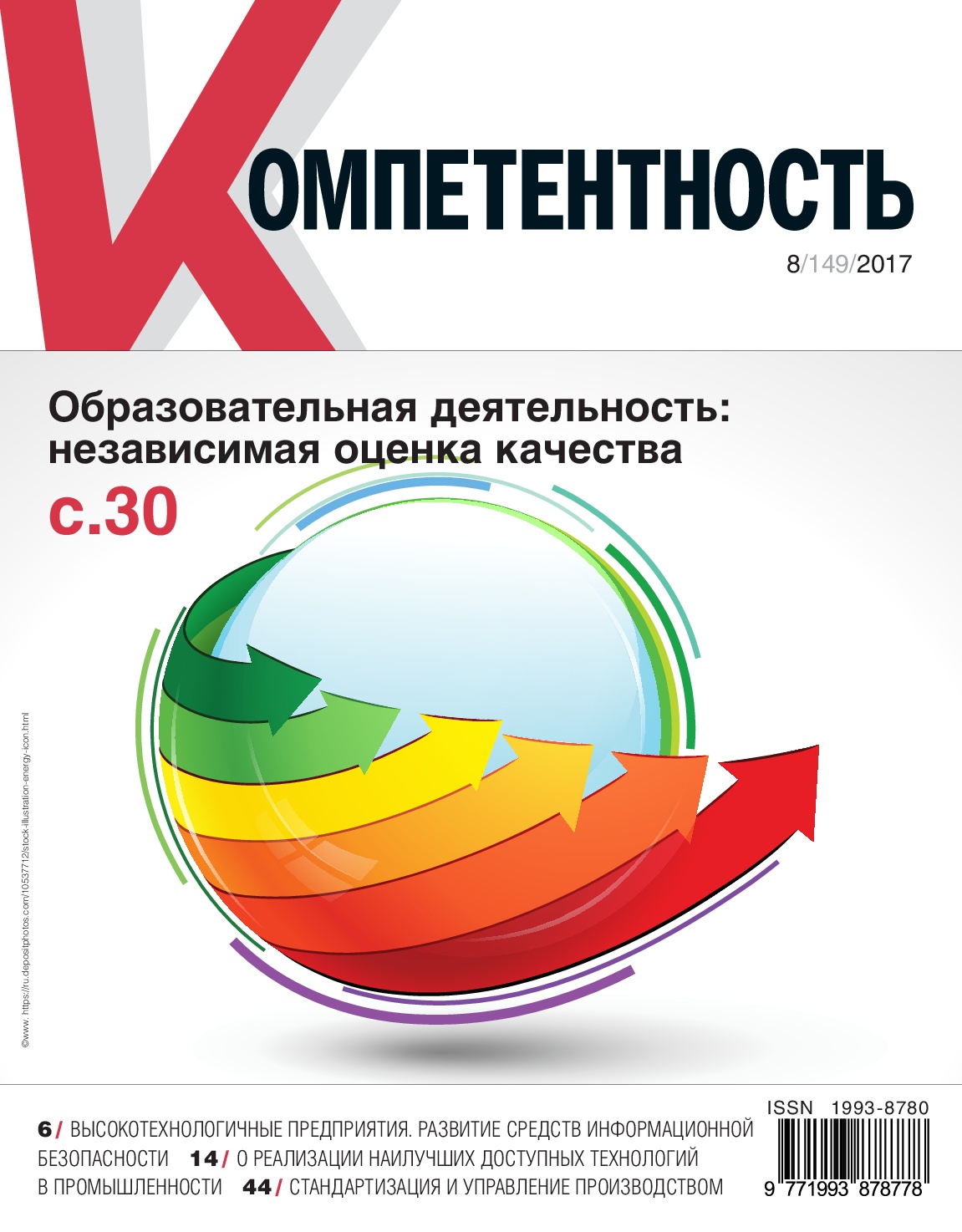 On the example of aircraft building, we have examined the issues of increasing the
On the example of aircraft building, we have examined the issues of increasing the
competitiveness of high-tech enterprises on the basis of information safety tools’
development. Information safety today largely determines both the economic and
general safety of high-tech enterprises. At the same time, the dependence of enterprise’s
economic safety level on its information component becomes more and more obvious.
The purpose of information safety is to protect information from a wide range of threats,
ensure business continuity, minimize damage and maximize profits. To create conditions
for full-fledged safety, the protection of automated systems must be ensured at all stages
of information processing, as well as in all modes of operation, using various methods
and means to ensure the safety and integrity of the data, which we discuss in this article.
Download -
2
Environmental and Energy Policy Priorities through the Prism of the BAT Implementation in Industry
Authors: Dr. E.G. Gasho, Expert of the Analytical Centre at the Government of the Russian Federation, Associate Professor of the National Research University Moscow Energy Institute, Moscow, Russia, 290461@bk.ruDr. Prof. T.V. Guseva, Head of Training and Consulting Center, Russian Bureau of Best Available Techniques, Moscow, Russia, tatiana.v.guseva@gmail.comDr. M.V. Stepanova, Associate Professor of the Technical University of Ural Mining Metallurgical Company, Еkaterinburg, Russia, stpnva@mail.ruK.A. Shchelchkov, Secretary of the Technical Working Group TRG 48 Energy Efficiency Enhancement, Russian Bureau of Best Available Techniques, Moscow, Russia, trg48@burondt.ru We consider development and expected implementation areas of the new Russian
We consider development and expected implementation areas of the new Russian
Information and Technical Reference Book on Best Available Techniques for Energy
Efficiency Enhancement. This inter-sectoral Reference Book is addressed to industries
categorized as installations causing significant environmental impact and consuming
substantial amount of energy in their production processes. Technological, technical
and managerial solutions are presented in the Reference Book to attract attention
of practitioners and provide them with advice necessary to select Best Available
Techniques and comply with compulsory sectoral Technological Parameters.
We emphasize that Energy Management System is not only a reliable Best Available
Techniques itself, but also a powerful instrument for selecting and implementing
technological and technical solutions needed to enhance energy efficiency and
motivate employees.
Download -
3
Current Problems Motorization. Electric Vehicles
Authors: Dr. V.A. Grushnikov, Senior Research Associate, VINITI of RAN, Moscow, Russia, viniti@mach04.ru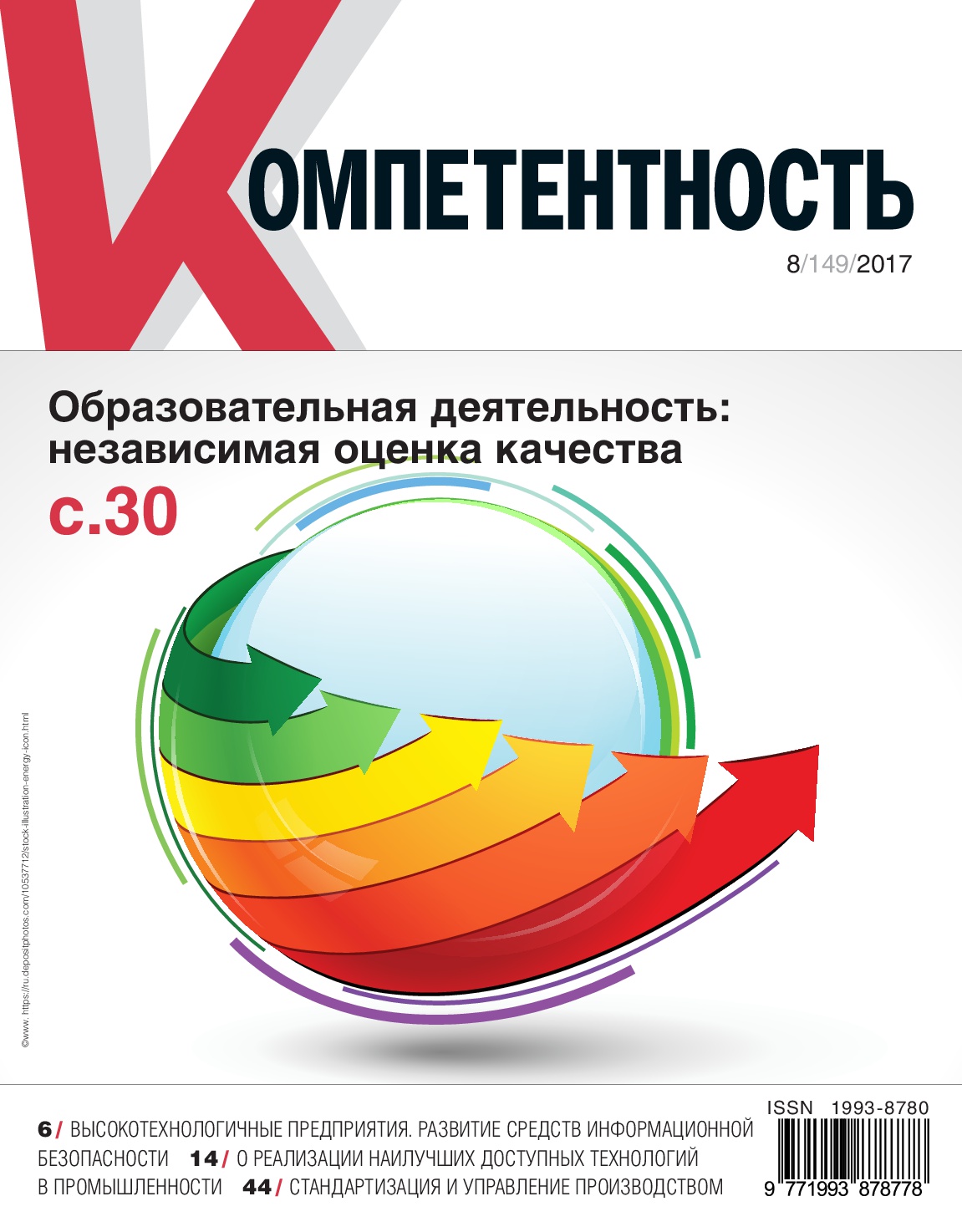 Due to the deterioration in the ecological situation which is shown, mainly, in global
Due to the deterioration in the ecological situation which is shown, mainly, in global
warming, the problem of an emission limitation of hazardous substances becomes the
most important component of safety more and more. Therefore the increasing attention
is given not only mechanical, but also net atmospheric protection of the person,
strengthened by transition from voluntary recommendations of the Kyoto Protocol to
more tough mandatory requirements of the Parisian Agreement.
According to forecasts of competent experts, by 2020 the world motor park will
be annually replenished with 103 million units/g, and by 2030 — 114 million units/g.
Worsening because of technogenic impact, in considerable degree because of a road
transport, an ecological situation force to toughen regulations of consumption of
hydrocarbonic fuel and issue of the hazardous substances which are formed in case of
its combustion in response to these challenges. One of such efficient limiters are the
limits established by the corresponding Directives of the European Union, UNECE
Regulations, standards of the international organizations of ISO and SAE on emissions
of hazardous substances with the fulfilled gases of systems of release of internal
combustion engines of wheel vehicles of different type and appointment.
To remain demanded in the market car makers are forced to look for
methods of the solution of these difficult tasks and to be leaders in competitive
struggle try, overtaking these requirements, to advance development
and use of a know-how. And the natural and organic solution of this
problem is use in the drive instead of the thermal machine of the electric motor in the
traction mode and the generator — in the mode of recuperative braking.
Download -
4
On Independent Evaluation of Educational Activities′ Quality
Authors: Dr. А.G. Zekunov, Professor, Leading Expert, Quality Management System Certification Body, Academy of Standardization, Metrology and Certification (training), Moscow, Russia, a_zekunov@mail.ruDr. D.S. Lopatkin, Head of Quality Management and Educational Programs Department, D. Mendeleev University of Chemical Technology of Russia, Moscow, Russia, kachestvomuctr@mail.ru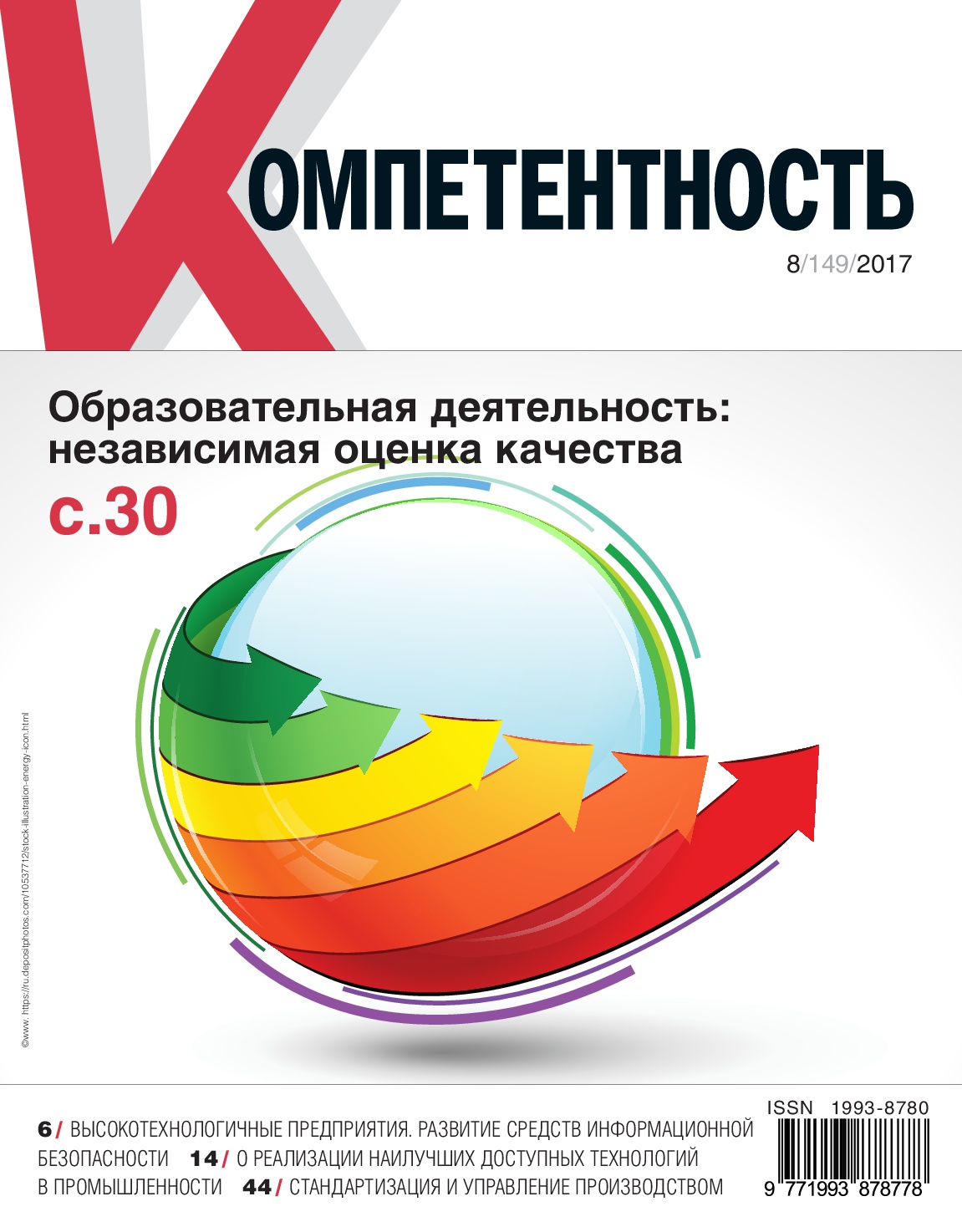 We have examined the main components of the successful activity of D. Mendeleev
We have examined the main components of the successful activity of D. Mendeleev
University of Chemical Technology of Russia. We consider that an effective quality
management system at the university is an important condition for efficiency.
The ongoing planned inspections and audits confirm the systematic improvement
of the main QMS processes.
A system of education quality’s independent evaluation, which is based on the
principles of transparency, transparency and regularity was developed and is being
actively implemented. Its procedures help the university management to make effective
and informed management decisions aimed at the continuous development and
improvement of educational activities, improving the quality of the educational process.
We believe that the correct introduction of the QMS helps to increase the added value
and value of the intangible assets of any organization, including the educational one,
which ultimately leads to an increase in its competitiveness.
Download -
5
Normocontrol of Technical Documentation in the Product Quality Management System
Authors: Dr. Е.V. Zimina, Associate Professor, Department of Building Technological Complexes, Nizhny Novgorod R.E. Alekseev State Technical University, Nizhny Novgorod, Russia, scheinrich@mail.ruDr. V.N. Kaynova, Associate Professor, Department of Theoretical and Applied Mechanics, Nizhny Novgorod R.E. Alekseev State Technical University, Nizhny Novgorod, Russia, kainovavn@yandex.ruDr. V.G. Kutyaykin, Head, Department of Standardization, Certification and Quality Management, Nizhny Novgorod Branch of Academy of Standardization, Metrology and Certification (training), Nizhny Novgorod, Russia, asms-nn@mail.ru Technical documentation’s normocontrol and metrological expertise as a form Technical documentation’s normocontrol and metrological expertise as a form of
Technical documentation’s normocontrol and metrological expertise as a form of
metrological control are a part of a tasks range on the regulatory and metrological
ensuring that the documentation meets the requirements.
In the article we have talked about the role of design and technological
documentation’s normocontrol in the tasks range on the normative ensuring compliance
of the documentation with the established requirements to ensure high quality of the
products.
We have described the methodology for conducting and the updated normative
base for standard control of engineering and technological documentation for
engineering industries. In addition, we have summarized and cited typical comments
of normocontrollers, systematized according to different types of documents.
We consider that in modern conditions the role of technical documentation’s
normocontrol as one of the forms of state regulation in the field of product quality
assurance has significantly increased.
Download -
6
Balanced Score Cards as a Method of Standardization and Production Management
Authors: M.V. Shanta, Postgraduate, Saint-Petersburg State University of Aerospace Instrumentation, Saint-Petersburg, Russia, marina.s_2004@mail.ruProf. Dr. E.G. Semenova, Associate Professor, Head of Department, Saint-Petersburg State University of Aerospace Instrumentation, Honored Worker of the RF Higher Education, Russian Government Award holder in area of education, Saint-Petersburg, RussiaProf. Dr. А.G. Varzhapetyan, Professor, State University of Aerospace Instrumentation, Academician, International Academy of Informatization, Russian Academy of Engineering Sciences, Saint-Petersburg, Russia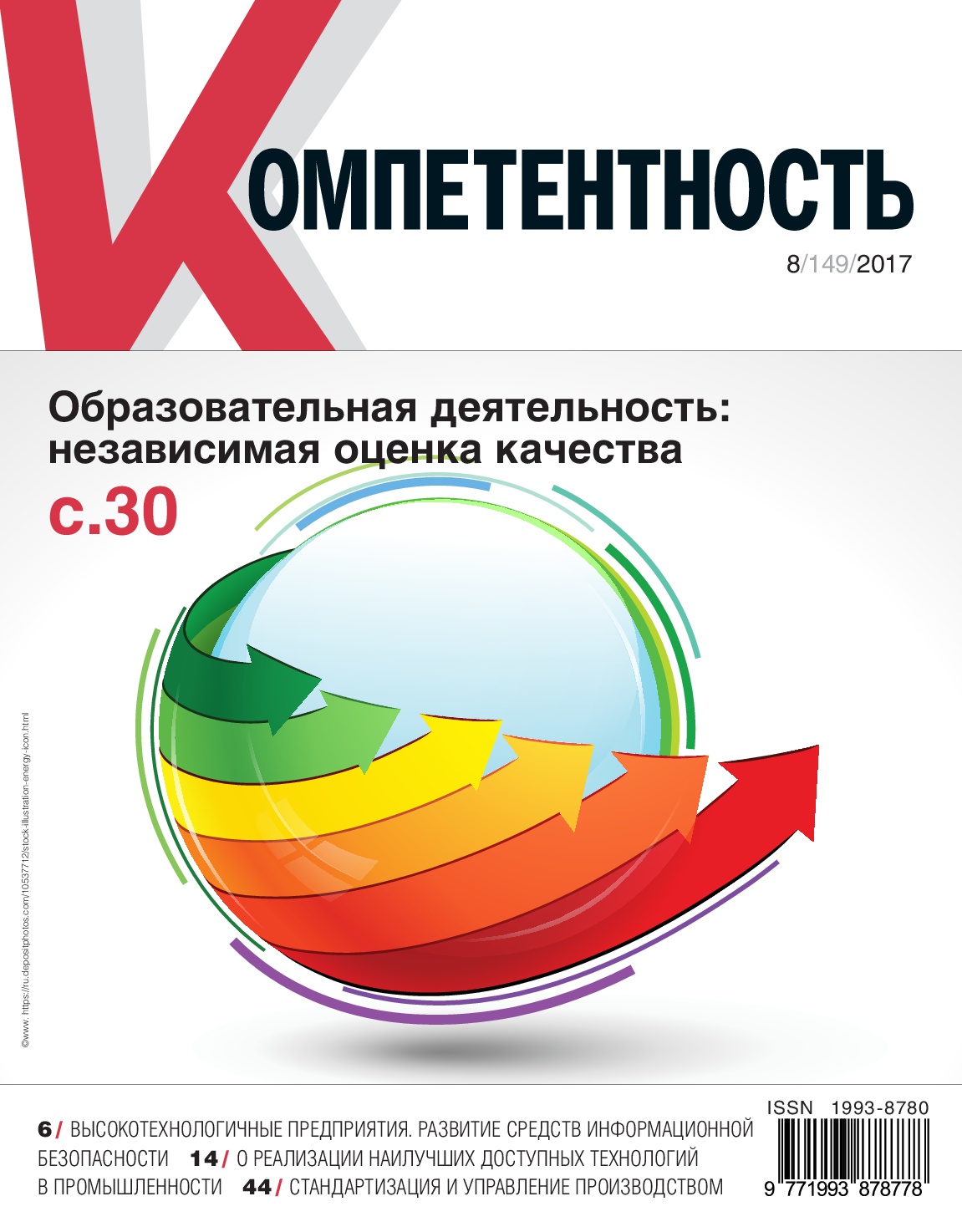 We have described the methodology for implementing a balanced score cards system
We have described the methodology for implementing a balanced score cards system
in an enterprise specializing in the production of household electrical appliances, which
makes it possible to monitor and achieve the company’s strategic goals.
We have examined four classical elements of a balanced score cards system:
(a) financial indicators; (b) customer; (c) internal indicators; (d) training and
development of personnel.
We have also defined the objectives of a particular enterprise and have developed
indicators (KPI) to achieve these goals.
We believe that after determining the strategy and strategic goals of the company,
its management should consider the mechanism for bringing the company’s objectives
to the staff. Finally, we have shown an improvement in the activity of an enterprise
specializing in the production of household electrical appliances, which it has achieved
as a result of applying to the technique of introducing a balanced system of indicators,
described in this article.
Download -
7
Non-Mobile Patients Transportation: Lean Production Principles
Authors: Dr. L.A. Fedyk, Head, Voluntary Certification System All-Russian Registr, Tyumen’, Russia info@9000-2001.ruDr. G.N. Shestakova, Head Physician, Surgut Region Clinical Hospital, Doctor-organizer of Health, Higher Category, Surgut, RussiaА.S. Tkachenko, Doctor-methodist, Higher Category, Head, Department of Standardization and Safety Medical Activity, Surgut Region Clinical HospitalYu.V. Dolgikh, Expert on QMS Certification, Voluntary Certification System All-Russian Registr, Tyumen’, Russia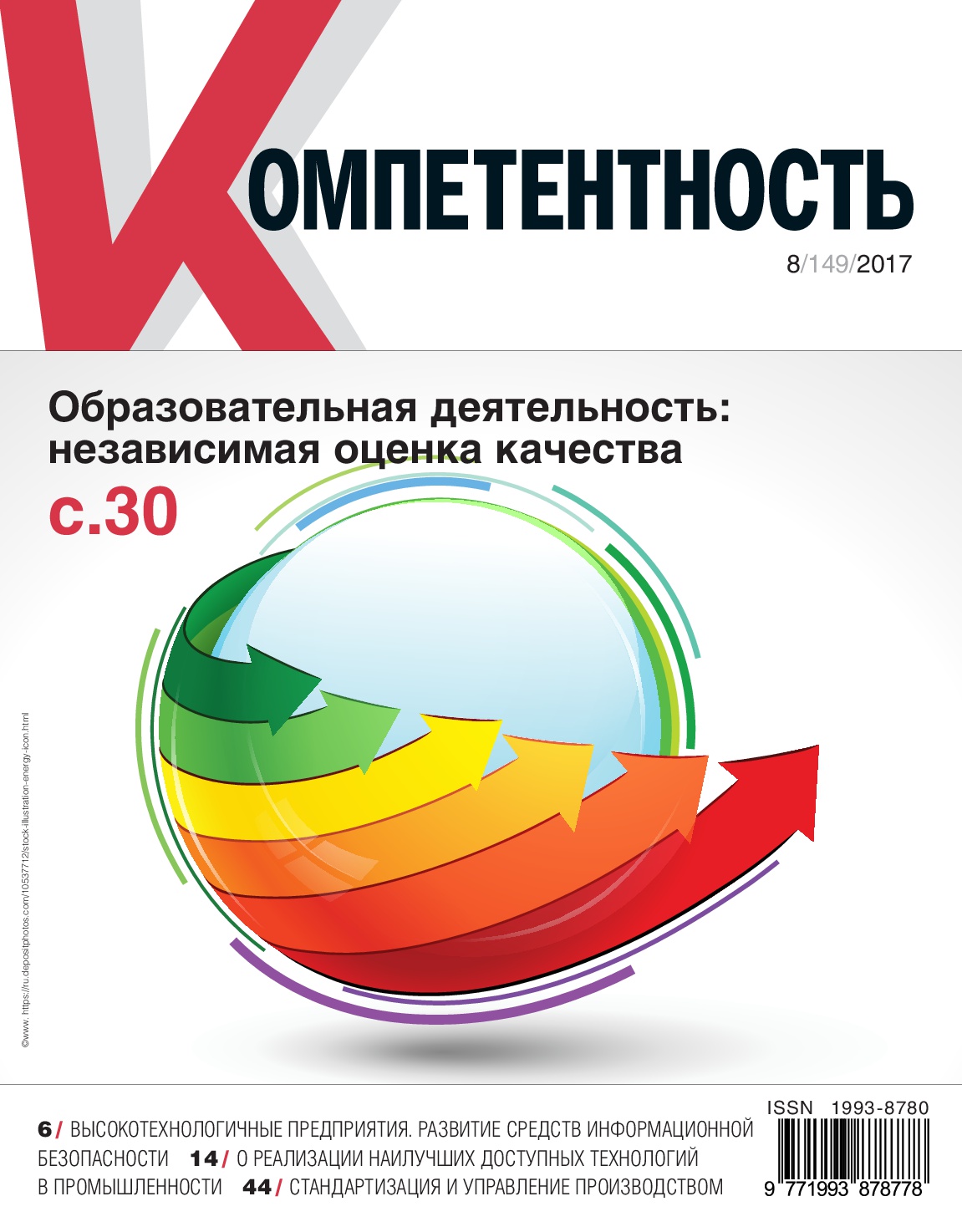 We have shared the work principles of the Surgut District Clinical Hospital on the
We have shared the work principles of the Surgut District Clinical Hospital on the
basis of implementing the ISO 9001–2015 standard’s requirements, as well as the
opportunities for improving processes based on Lean production principles and a riskbased
approach.
Risk management in the organization occurs with the help of modern techniques,
for example FMEA-analysis of the process.
We have lead detailed process and have found out, that it demands significant
time from medical workers. It negatively affects on other patients quality service.
In this connection we had been created service of non-mobile groups patients support
as separate structural unit. The lead reorganization has allowed to lower expenses
for transportation almost twice, including expenses and inefficient use of time as main
resource have as much as possible decreased.
The calculation of the probability and significance of risk has shown that the risk
of patient falls during transportation is one of the main risks. Clear working instructions
and algorithms of the transportation process have been developed, the implementation
of which is checked once a quarter for internal audits. Prevention of fall is carried out
at all stages of transportation.
We also have taken into account the climatic conditions of the seasons. The results
of non-mobility patients transportation process centralization are:
increasing the quality of care for all hospital patients;
reduction of time spent by qualified personnel on low-skilled labor with the possibility
of providing nursing assistance to patients within the limits of the standard;
rationally constructed logistics of vehicles allowed to reduce the number of vehicles
for transportation of patients from five to two;
improved the prevention of falling in the non-mobile groups.
Download



